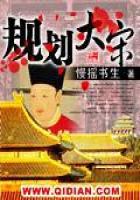The triennial rotation is generally followed. The arable is divided into three portions: the winter-essch , sown with winter rye;the Zomer-essch , sown with summer rye; and the brachessch, which formerly lay fallow, but where buckwheat is nowgrown. The collective body of cultivators is called de boer , that is "the peasant." They meet in full assembly ( hagespraak ), inthe open air under immense oaks of centuries' growth, or in a kind of grassy amphitheatre, in the centre of which the oldsacrificial altar of stone is still often standing. The cultivator, who keeps the communal bull, also has charge of thecow-horn, which summons the inhabitants to the assembly, and gives the signal for the various works to be executed in thefields. When all interested are assembled, they deliberate and fix the period for ploughing, sowing and harvest. In thisassembly, also, are chosen the four volmagten charged with executive power;with this thoroughly democratic reservation,however, that the kotters , or ****** labourers living in a cabin, should nominate two, and the boeren, or cultivators owninghorses, should nominate the other two. When the day fixed for harvest arrives, the horn is sounded at daybreak and all set towork. In the evening when the signal to cease is given, everyone is forbidden, under penalty of a fine, to continue cutting thecorn. When the sheafs are formed, everyone is bound to arrange them in stacks of eight, in hokken , to dry them and keepthem, as much as possible, from the rain. The day for gathering in the harvest is also fixed, after common deliberation. Merryfeasts and deep libations celebrate the happy day, which secures to the cultivators the recompense of their rude labours.
The land is then surrendered to common pasturage. Cows are first sent on to it, then sheep, and after that the surface of thesoil is turned lightly over, and is soon covered with wild sorrel ( rumex acetosella ), which the Dutch call schaapsurkel . Thename is an appropriate one, for the plant is capital food for sheep, which are very fond of it. On seeing for the first time the esschen of Drenthe, red with the innumerable quantity of these microscopic flowers, one is at a loss to what to attribute thestrange colour, for one never expects to see a weed intentionally cultivated, which is everywhere else regarded as a nuisance.
At night the sheep are folded on the fields. The Dutch maintain that their country gave birth to this practice, which Englishagriculture has turned to such good account. Every cultivator has to furnish fence in proportion to his head of cattle. Theright of common on the stubble is called klauwengang ; and is generally in force. To keep the cattle from the essch , when thecrops are still standing, it is surrounded by a rough wall of turf-clods bounded by a ditch ( essch-wal ). Every one is bound towork at this wall on the day fixed by the assembly; and whoever is more than half-an-hour late, after the horn has summonedthe labourers to the work, has to pay fourpence fine.
The village stands at a little distance from the essch . The houses are well built, and kept in admirable repair. They arearranged round a large space (the brink ); and raise their white gables under the shadow of old oaks whose majestic crestsmake one think of the vast forests of Teutach, where the Germans loved to fix their dwellings.
There still exist in Holland a few forests held in common, which are relics of the old forest marken . The chief communalforests of the Veluwe are; the Hoogsoerenschbosch, the Uddelerheegde (492 hectares ), the Elspeterbosch (500 hect .), theGortelscherbosch (800 hect .), the Putterbosch (360 hect .), the Spielderboach (585 hect .), the Speulderbosch (923 hect .),and the Meervelderbosch (700 hect .). The Vierhouterbosch (334 hect .) is now private property. These woods are composedof forest trees with underwood beneath. The forest trees are, for the most part, beech, the two kinds of oak of the country(quercus robur and petiolatus), and the Scotch fir. They do not let these trees obtain a very large development, but cut themafter fifty or fifty-five years' growth. The young trees sow themselves; and all are carefully left which have not attained thedesired size. For new stocking they trust entirely to nature, and seldom have recourse to planting. The underwood is cutevery eleven years. It is of considerable value, as it contains much oak, the bark of which sells at a good price. Theinhabitants of the commune are entitled to collect dead wood, leaves and pine cones in the forest.
These forests do not give a very high revenue. The Putterbosch from 1853 to 1863 produced a total of 44,283 florins (aflorin = 1s. 8d.), which makes an average of 4,428 florins, or about 12 florins the hectare .
A share in the Spielderbosch, about a thirtieth, produced in the last ten years an average amount of 87 fl. 20 c. in wood, and46 fl. 33 c. in money, or a total of 133 fl. 53 c., which is hardly more than 7 fl. the hectare . One of these shares was soldsome years ago for 2,000 fl.; but now, in consequence of the price of wood, much more is asked. The value was relativelyhigh, even m the middle ages. There were then, probably, old oak trees in the forests. An extract from the register of thePutterbosch shows that a share in this forest was worth 100 forms in 1579; and a share in the Spielderbosch 400 forms. " Opden 3 february 1579 is by de maalen van Putton en Spielderbosch eendragtelyk besloten en overgegeven van nu voortaanonderholden te sullen worden, dat die gemeene macden van Putterbosch ieder hoeve holts die aen geen maelman wesendeverkoft vord tot profyt der bosch aan sig te mogen holden voor een hondert gulden ad twintig stuyver hot stuk, ende diemaalen van Spielderbosch voor vier hondert gulden ."In 1864 a share in the Speulderbosch brought in 155 fl., and a sharein the Elspeterbosch, 90 fl. The first share is estimated at 3,600 fl., and the second at 2,200 fl.















